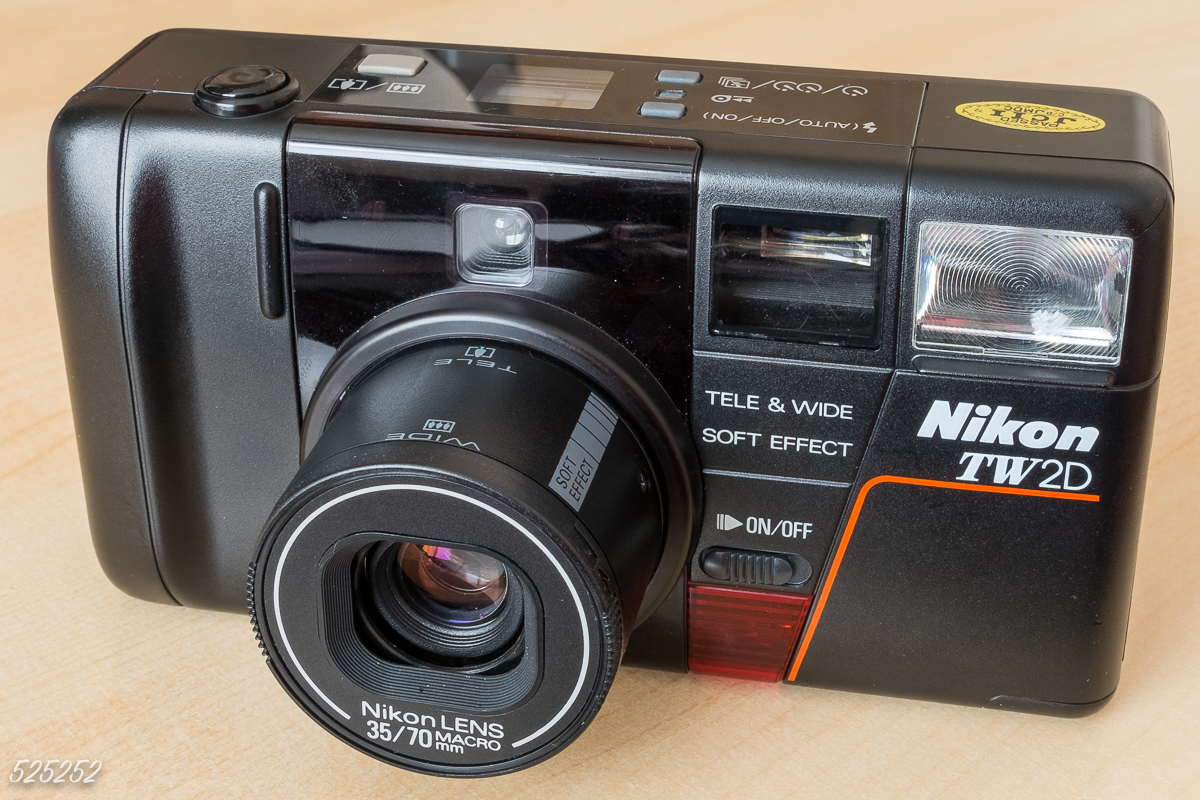And following on from last week we have another twin lens compact camera&hellip The Nikon TW-2D (also sold as the Tele•Touch Deluxe).
When it was introduced in 1987, Nikon claimed that the TW2/TW2D was the 'world's thinnest dual-lens, AF compact' (a claim that seems unbelievable 30 years on!)

Nikon TW2D
Another camera with 35mm and 70mm lenses, the TW2D also boasts a built-in 'soft effect' filter, activated by turning a ring at the front of the lens barrel. Like the Olympus AF-1 Twin, film speed setting is automatic but in the case of the Nikon it can be overridden (albeit with much button pushing).
I've no idea of the shutter speed range, the original instruction book doesn't mention it and for once Google has let me down too, but I think that the slowest speed is around ⅕ sec.
Let's see how it compares to the Olypmus AF-1 Twin!



















